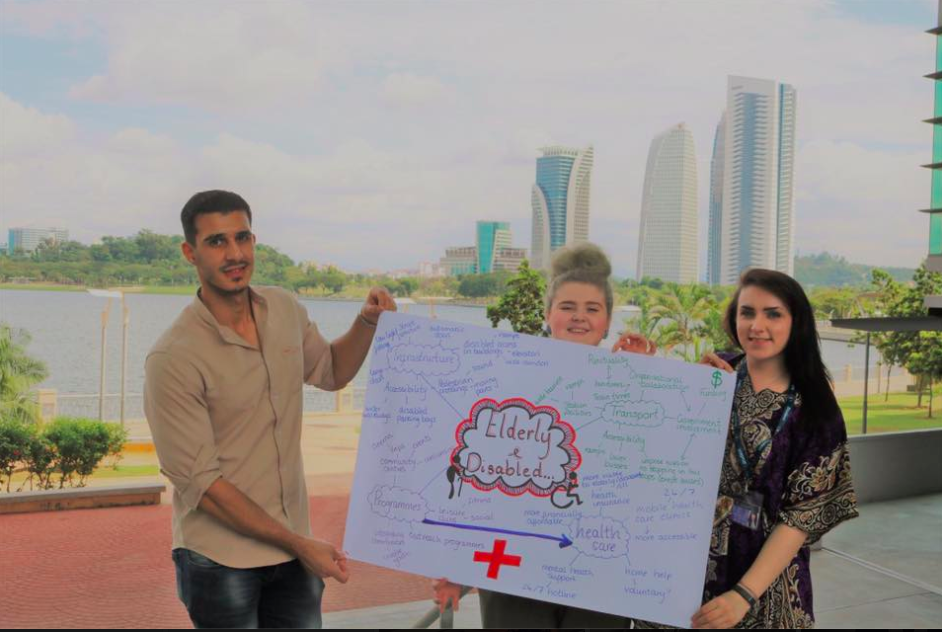In today’s input by Patricia, I found the aspect of personality very intriguing.
Personality, as quoted in Bee and Boyd (2012, p 218) is “The individual’s enduring patterns of responses to and interaction with others and the environment.”
Personality is a very difficult area to study, as everyone is different.
There are five different dimensions of personality traits:
- Extraversion (opposite to introversion)
- Agreeableness (warm/compassionate or cold/distant)
- Openness (Ability to imagine, be insightful and question things)
- Conscientiousness (our impulse control)
- Neuroticism (stability/instability of emotions)
An ambivert is someone who is both an introvert and an extrovert. One test of this was by Grant. He assumed that sales persons would be better if hey were extroverts. However, he found that it was actually the ambiverts that were, as extroverts can be too loud, overconfident and come across as cocky.The ambiverts were better as whilst they were confident in themselves and their role, they were also able to be quiet and listen to the needs of customers.
I took an online test to figure out whether I am an introvert, extrovert or an ambivert.
The result (pictured right) is that I am not either introvert or extrovert, I am in fact an ambivert; in-between the two. I totally agree with this, as I am an outgoing person, but at the same time I do like to have some “me-time!”
‘There is no such thing as a pure introvert or extrovert. Such a person would be in the lunatic asylum.’ – Carl G Jung
This is easy to agree with. Someone who lacks in social skills will not be able to function properly in society. Likewise, someone who is overconfident and overly-clingy will have the opposite problem. I would however not use the term “lunatic asylum”.
The five big personality traits:

If I was to rate myself on these I would say:
- Extraversion – 6
- Agreeableness – 9
- Openness/intellect – 8
- Conscientiousness –7.5
- Neuroticism – 7
Since I was a child, I do not feel my personality has changed much. I am still the same outgoing bubbly independent person, who still likes to have time to myself. What I would say is I’ve become more confident in myself and really began to understand my own personality more over the past few years.
However, is personality predetermined by nature?
 There are some genetically determined characteristics that we are born with, and differences in personality are termed physiological. There have been some tests with identical twins, which has found they have the same personality traits. This is also the case with normal siblings – even though most of us assume we are completely different to our siblings. There is a dip in the personality expression in terms of physiological processes. Everyone has a stable temperament and disposition from childhood right through to when they become an adult, and the environment plays a part in influencing or modifying how our temperament changes.
There are some genetically determined characteristics that we are born with, and differences in personality are termed physiological. There have been some tests with identical twins, which has found they have the same personality traits. This is also the case with normal siblings – even though most of us assume we are completely different to our siblings. There is a dip in the personality expression in terms of physiological processes. Everyone has a stable temperament and disposition from childhood right through to when they become an adult, and the environment plays a part in influencing or modifying how our temperament changes.
What about the other side of the argument, nurture?
Yes, how we are brought up plays a big role in the way we learn how to act. Often our traits are
gained through observations and are termed “learned behaviours”. I believe nurture plays a large role in developing our personalities. If your mother is outgoing, you will subconsciously grow to act the same as her. Another example of this, is you are unlikely to have shy parents who do not communicate well raising a very outgoing child. A shy child in a new situation will show signs of muscle tension, an increased heart rate and dilated pupils. They are born with this disposition towards physiological processes. The cerebral cortex of these shy/anxious children is thicker. Out temperament and disposition become stable, and our experiences shape this.
The behaviourist principles of personality development is a very interesting learning theory. The principles include:
- Strengthening behaviour through reinforcement
- Reinforcing said behaviour intermittently to result in better learning
- If reinforced too often, it will not be effective.
It is important not to reinforce negative behaviours. If they know they will continue to get attention from behaving in a certain way (E.g. badly) they will continue to do it, reinforcing this behaviour.It is also better to reinforce intermittently. Doing it every time will cause them to lack motivation as they will know they don’t need to work to get praise. By praising occasionally, they will be motivated to work harder. This is an interesting lesson for teachers. It takes a while to influence a child’s behaviour so it is important that in the process we are enforcing the correct behaviours.
Bandura’s Social learning theory
Bandura’s Social learning theory is built upon the idea of modelling. Modelling is when we observe someone, and copy their behaviours.
( e.g. If a child grows up in an area where everyone acts the same; such as where people shoplift and vandalise; the child will learn this behaviour through the process of modelling, can be a motivation to learn behaviour.
This “modelling” is when we strengthen our behaviours through constant reinforcement. These reinforcers cause personality to develop through both cognitive and physical factors.
The self-efficiency aspect is when we consider how we feel about ourselves and our own standards. People who are self-efficient are those likely to go right away from a lecture and complete the associated TDT. Those who don’t go away and do this may not do so for reasons such as they are not confident enough, or that “no one else is” – these people have low self-efficiency.
These behaviours are reinforced by parents, who model a child’s “internalised standards”. E.g. a tidy house is a standard of learning.
Bandura’s model is based on a process of observation, imitation and internalisation; along with cognitive, physical and motivational factors.
The four conditions that need to be met are:
- Paying attention
- Remembering
- What can be physically copied
- Motivation to imitate
This theory can be analysed whilst considering learning a new sport. You need to be able to pay attention to what you are doing, if you cannot do this you will not know what they are doing in order to move on and develop the next condition. You need the ability to remember a breakdown of the sport and all the different parts of it, in order to piece together what your role in it requires you to do. If you cannot do this, you will be physically poor at the sport- which is the next step. Different things can be copied, the most important being the movements. However by observing a professional it is hoped that we will subconsciously learn their confidence and good techniques. Our motivation to imitate is our initial desire to attempt the sport. If we are not motivated o try, we will have no desire to learn and, therefore, take nothing away from the observation. By only observing, we won’t remember or be able to physically copy what the person is doing.
Freud’s Theory of Personality is initially based on the idea of sexual needs.
 I do not agree with the age stages within Freud’s stages of development, as I feel his view that we stop developing at the age of 18 is, well, crazy. I’m only 18 at the moment and I feel, especially in terms of my personality that I have a lot more developing to do. Also, none of his stages are backed up with scientific evidence. In fact, most of his clients were actually middle aged Vietnamese women. Many elements are right, but are difficult to test making this theory very hard to prove or disprove.
I do not agree with the age stages within Freud’s stages of development, as I feel his view that we stop developing at the age of 18 is, well, crazy. I’m only 18 at the moment and I feel, especially in terms of my personality that I have a lot more developing to do. Also, none of his stages are backed up with scientific evidence. In fact, most of his clients were actually middle aged Vietnamese women. Many elements are right, but are difficult to test making this theory very hard to prove or disprove.
Erickson’s Psychosocial Stages of Development

Erickson’s Psychosocial Stages of Development is based on the concept of ego-identity. Erickson states that the successful completion of each stage, leads to a healthy progression into the next one. It also helps create a good personality and very successful social skills. The theory does state that failure of a stage hinders development, which is questionable.
I do not fully agree with this, as things that go wrong can be resolved, and this theory is very hard to prove or disprove due to a lack of scientific testing. The quote “life begins at 40” comes into mind. This makes sense in accordance with this theory, as by 40, we have developed all our personality traits.
I agree with the fact that Erickson’s theory goes right up to the ages of 40+. This is interesting, especially when thinking about the phrase “life begins at 40”. As according to Erickson that we have developed almost all our personality traits by then, maybe this is true?
This Is very relatable and makes a lot of sense in a lot of ways. It is very understandable that trust is built up in the first year of life. Also, that tivities become goal orientated around age 4-5, which I can personally relate to as I see my little sister going through this phase at the moment.
I do however disagree on providing an approximate age scale. Yes, it is good to know where children should be at what age, but even a slightly different wording to “suggested age scale” would make it less stressful for parents who’s children are not quite at the right development for their age (within reason, obviously).
I believe it is important we learn about personality so we can take this knowledge into the 
classroom and be able to identify the different personality traits of our pupils. This will allow us to spot signs of slower development and identify poor behaviour styles.
This will have a positive aspect of the child’s development in the classroom as they will get more direction from a teacher who understands their personality. It may even help forming that relationship a little easier.























